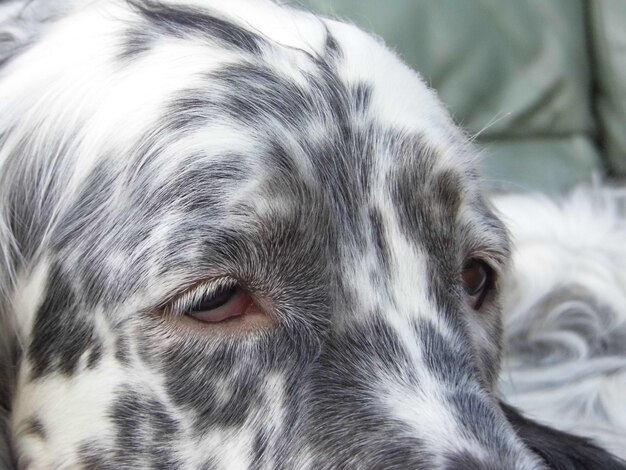Helping Your Furry Friend: Understanding and Managing Cataracts in Dogs
Imagine waking up one day to find the world around you becoming blurry and obscure. For many dogs experiencing cataracts, this is a reality they have to face. Cataracts are a common eye condition that causes the lens of a dog's eye to become cloudy, hindering their vision. While cataracts can be concerning, especially for dedicated pet owners who strive to provide their dogs with the best care possible, there are various paths to manage and treat this condition. Let’s explore cataracts in dogs comprehensively, covering what they are, how they affect dogs, and what management and treatment options are available.
🌟 What Are Cataracts in Dogs?
Cataracts occur when the lens of the eye becomes opaque, leading to a decrease in vision. In dogs, cataracts can develop for various reasons, including genetic predisposition, age, and underlying medical conditions such as diabetes mellitus. Understanding the cause of the cataract is crucial in determining the best approach to management or treatment.
Causes of Cataracts in Dogs
Genetic Factors: Certain breeds are more susceptible to developing cataracts due to genetic factors. Breeds like the Cocker Spaniel, Poodle, and Siberian Husky are known to be more predisposed.
Aging: As with humans, aging can naturally lead to cataract development in dogs. It’s a common occurrence in senior dogs.
Diabetes Mellitus: Dogs with diabetes are at higher risk of developing cataracts due to fluctuating blood sugar levels affecting the lens’ health.
Trauma and Eye Injuries: Physical injuries to the eye can result in cataract formation due to damage to the lens.
Nutritional Deficiencies: Although rare, inadequate nutrition can affect eye health and contribute to cataract development.
Symptoms to Watch For
Recognizing the symptoms of cataracts in dogs is essential for early intervention. Common signs include:
- Cloudy or Bluish Eyes: A noticeable cloudy film over the eye lens is the most obvious sign.
- Clumsiness: Dogs may bump into objects or struggle with stairs.
- Reluctance to Move: Hesitation in unfamiliar environments due to impaired vision.
- Eye Irritation: Redness, swelling, or irritation around the eyes.
If you observe any such changes in your dog’s vision or behavior, consulting a veterinarian is advised.
🩺 Diagnosing Cataracts in Dogs
A proper diagnosis is vital to distinguish cataract from other eye issues. Diagnosis typically involves:
- Complete Eye Examination: Using specialized tools, veterinarians examine the eye for signs of cataracts.
- Medical History Review: Understanding underlying health conditions, such as diabetes, that might influence cataract formation.
- Vision Testing: Assessing how much the cataract impairs the dog's vision and determining the stage of the condition.
These steps help veterinarians confirm cataracts and formulate a treatment approach or manage expectations regarding the dog's vision capabilities.
⚕️ Treatment Options for Dogs with Cataracts
While some cataracts may not interfere with a dog's daily life, others can severely limit vision, necessitating intervention. Treatment options are varied, from surgical to supportive care.
1. Surgical Intervention
Cataract Surgery is the most effective treatment for restoring vision. The procedure involves removing the cloudy lens and, in most cases, replacing it with an artificial lens. It is, however, a specialized procedure often recommended when cataracts significantly impair vision.
- Pre-Surgical Preparation: Assesses the dog's overall health to safely undergo anesthesia.
- Post-Surgery Care: Involves eye drops, medications, and follow-up visits to ensure the success of the surgery and patient comfort.
Surgery is not always suitable for every dog, depending on factors like overall health and the presence of complicating conditions such as retinal degeneration.
2. Non-Surgical Management
For dogs where surgery is not viable, or cataracts are in their early stages, non-surgical strategies are considered:
- Monitoring: Regular check-ups to assess any progression in the cataract or impact on vision.
- Medical Management: Use of anti-inflammatory or antioxidant eye drops to manage comfort, alongside controlling underlying conditions like diabetes to prevent further lens damage.
3. Lifestyle Adjustments
Ensuring a safe and comfortable environment is crucial for visually impaired dogs. Consider these adjustments:
- Stable Routine: Keeping water, food, and favorite items in consistent locations to help navigation.
- Safe Spaces: Creating clutter-free, familiar pathways within your home.
- Use of Sound Cues: Introducing sound-based guidance tools (like bells) to help dogs navigate.
🛡️ Prevention and Care
Unfortunately, while not all cataracts are preventable, there are steps you can take to support your dog's eye health:
- Regular Vet Visits: Routine health checks can catch problems early and help manage overall health, especially if your dog is predisposed to eye issues.
- Diet and Nutrition: Providing a balanced diet supports overall and eye health. Discuss any nutritional supplements with a vet.
- Management of Diabetes: For diabetic dogs, maintaining stable blood sugar levels can mitigate cataract progression.
💡 Summary and Practical Tips
To keep information digestible, here are crucial takeaways for managing cataracts in your dog:
- 🚦 Early Detection: Pay attention to symptoms like cloudiness in the eyes and changes in behavior.
- 👨⚕️ Seek Veterinary Advice: Regular check-ups can help spot issues early and guide you on whether surgery or management is suitable.
- 🔍 Understand Risks: Be aware of breeds more prone to cataracts and take appropriate care measures.
- 🦴 Nutritional Care: Prioritize a healthy diet and consult on possible supplements to support eye health.
- 🛠️ Safe Environment: Adapt your home to ensure your dog’s safety and ease of navigation.
Addressing cataracts in dogs involves understanding the nature of the condition, recognizing symptoms early, and considering the best treatment or management options to fit your dog's needs. Your veterinarian is a key resource in this journey, helping guide the best course of action tailored to your furry friend's health and well-being. By staying informed and proactive, you can help maintain your dog's quality of life and ensure they continue to see the world as clearly as possible.
